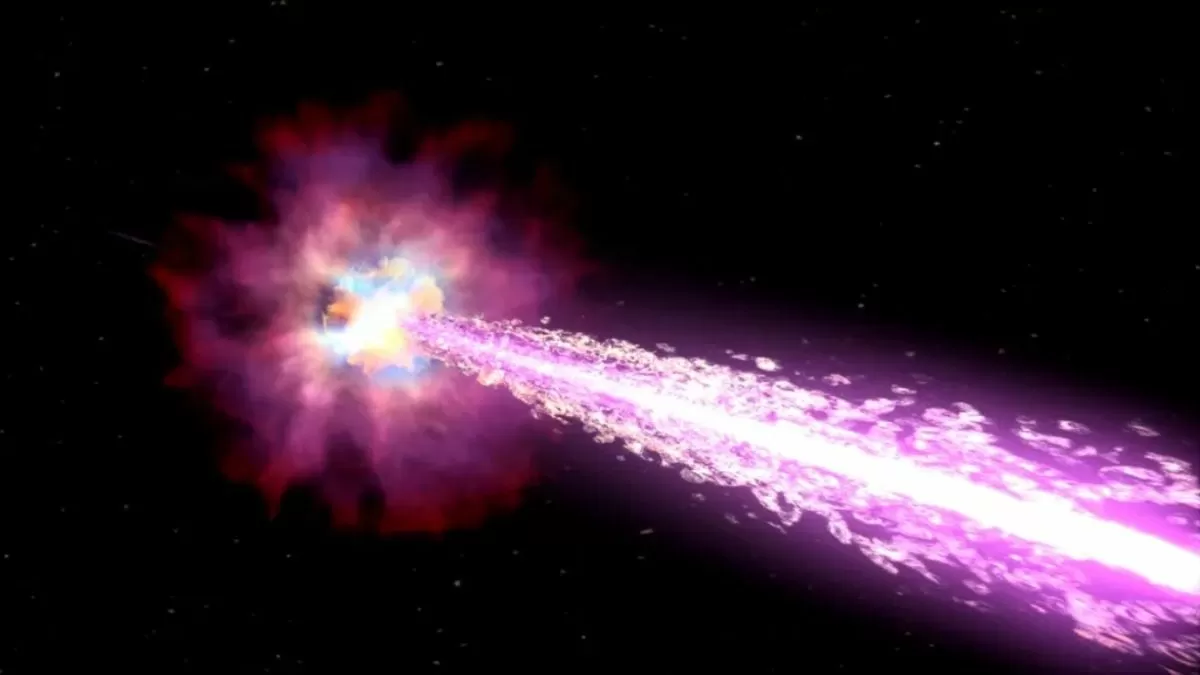In the vast expanse of our universe, there are many mysteries waiting to be unraveled. Recently, a team of astronomers has made a groundbreaking discovery that has reshaped our understanding of cosmic structures. By studying the powerful bursts of gamma-ray radiation known as gamma-ray bursts (GRBs), they have uncovered a larger and closer version of the Hercules–Corona Borealis Great Wall – the largest known structure in the universe. This remarkable finding has not only expanded our knowledge of the cosmos but has also challenged existing theories on cosmic scale.
The Hercules–Corona Borealis Great Wall, first identified in 2013, is a massive cluster of galaxies located approximately 10 billion light-years away from Earth. It is a collection of superclusters, which are groups of galaxies bound together by gravity. This structure is estimated to be around 10 billion light-years long and contains over 100,000 galaxies. To put it into perspective, our Milky Way galaxy is only 100,000 light-years in diameter.
Using data from NASA’s Fermi Gamma-ray Space Telescope, the team of astronomers led by Dr. Istvan Horvath, a researcher at the National University of Public Service in Hungary, analyzed the distance of GRBs from the Earth and found a significant concentration of these bursts in the direction of the Hercules–Corona Borealis Great Wall. These bursts, originating from distant galaxies, helped map out the structure of the Great Wall and revealed that it is not only larger but also closer than previously thought.
Dr. Horvath and his team found that the Hercules–Corona Borealis Great Wall is not 10 billion light-years away, but only 7 billion light-years, making it 30% closer than previously believed. This new distance measurement also increased the estimated size of the Great Wall to 12 billion light-years, making it the largest known structure in the universe.
This discovery has profound implications for our understanding of the cosmos. It challenges the current theories on cosmic scale, which state that the universe should be homogenous on a large scale. The fact that such a massive structure can exist in a relatively small portion of the universe goes against this notion and raises questions about how the universe evolved and how large structures like the Great Wall can form.
Moreover, the closer distance of the Great Wall has also led to another interesting finding. It appears to be connected to another massive structure, the Corona Borealis Supercluster, which is only 3.6 billion light-years away from Earth. This link between the two structures suggests that they may have formed together, challenging the idea that superclusters are independent structures.
Dr. Horvath and his team believe that their discovery of the closer and larger Hercules–Corona Borealis Great Wall will open up new avenues of research in the field of cosmology. With the help of sophisticated telescopes and advanced technology, astronomers will be able to study this colossal structure in more detail, providing insights into the evolution of the universe.
The study of GRBs has proven to be a powerful tool in understanding the vastness of our universe. These bursts, which are the most energetic events in the universe, occur when massive stars collapse or when two neutron stars merge. They can be detected from billions of light-years away and have helped map out the distribution of matter in the universe.
The discovery of the larger and closer Hercules–Corona Borealis Great Wall is not only a testament to the advancements in technology but also highlights the importance of international collaboration in the field of astronomy. The team of astronomers involved in this research included scientists from Hungary, China, and the United States. This cross-cultural exchange of ideas and expertise has ultimately led to this groundbreaking discovery.
The mystery and wonder of our universe continue to unfold with each new discovery. The larger and closer Hercules–Corona Borealis Great Wall is yet another reminder of how much we still have to learn about the vastness of space. As we continue to push the boundaries of our knowledge, who knows what other cosmic secrets we will uncover.

